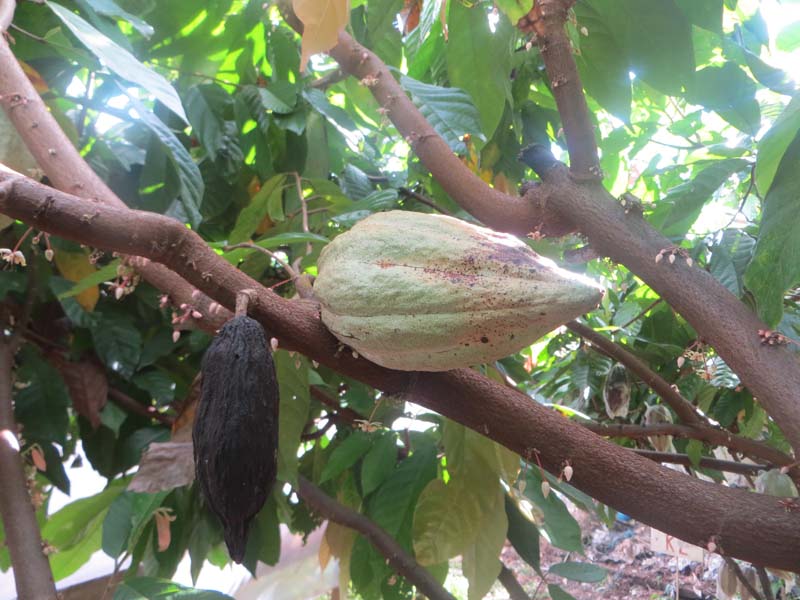A very simple investment
Your participation in a cacao farm is very easy: for 1,950 Euro you get 300 cocoa trees. This is the smallest amount, but you can expand it at your leisure. All cacao trees you decide to buy will become yours through a notarized contract.
Additional information:
https://idw-online.de/pages/de/news420876
http://www.scinexx.de/wissen-aktuell-11705-2010-05-25.html
http://de.wikipedia.org/wiki/Kakao
Fast return of your investment
After less than two years, the first fruits are starting to form on the trees. However, they are so small that you can not call that a profitable harvest. It starts at the end of the third year, matching your payout. Cacao trees of the new generation (UF18, BR25, W10, etc.) can be harvested two times per year with a total of six kilograms of wet cacao beans – assuming an expert management. If the yield is higher than anticipated – what we strive for through professional management – we are very happy.
The cocoa plants grow either on Mama Earth farms under the constant surveillance of farmers, where each employee has his own section, or is a part of our farm program. The main difference is that in the farm program every farmer can work on every area of his land, but only under the management of Mama Earth. He also takes part in the harvesting, which is not the case for our permanent farm workers on our Mama Earth farms. For you as investor it is only a small difference – we would like to advise you directly.
Redemption rate
You will receive your share from the harvest for 15 years, starting with 100 Euro plus 130 Euro on your fund, as shown in the ‘Guaranteed gains’ column in the table below. With a guaranteed minimum payment, you will already receive 5.2 percent of green interest.
You can see the ‘Predicted Payouts’ on the right-hand side as secure information. So, expect 8 percent and more for your social investment. In addition, your investment will be repaid in equal installments every year, as shown in the table. Simply put, you can nearly double your investment and provide reasonable paid and socially just jobs.

